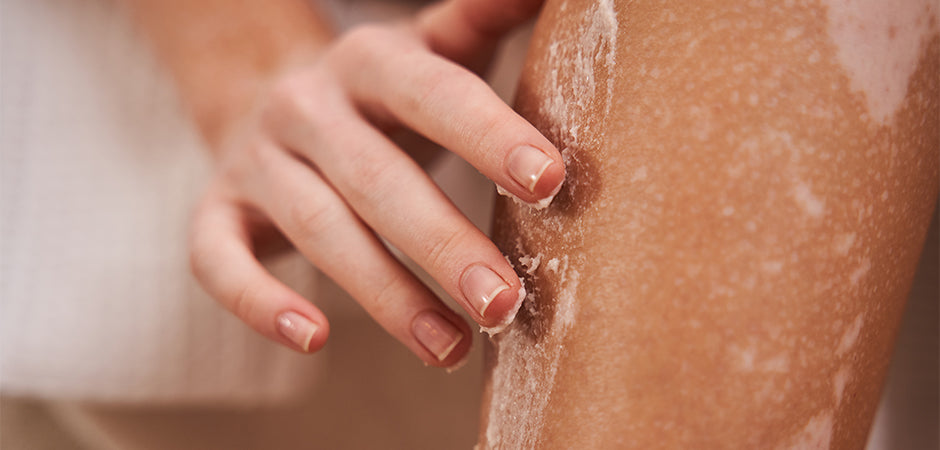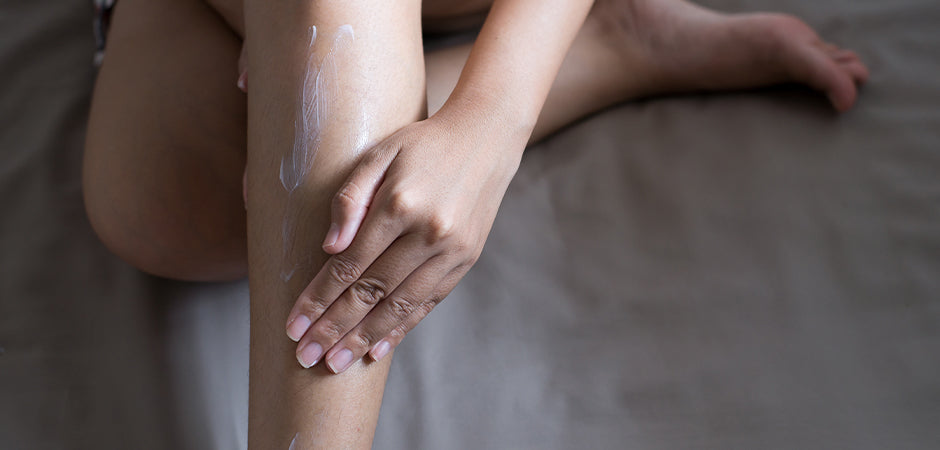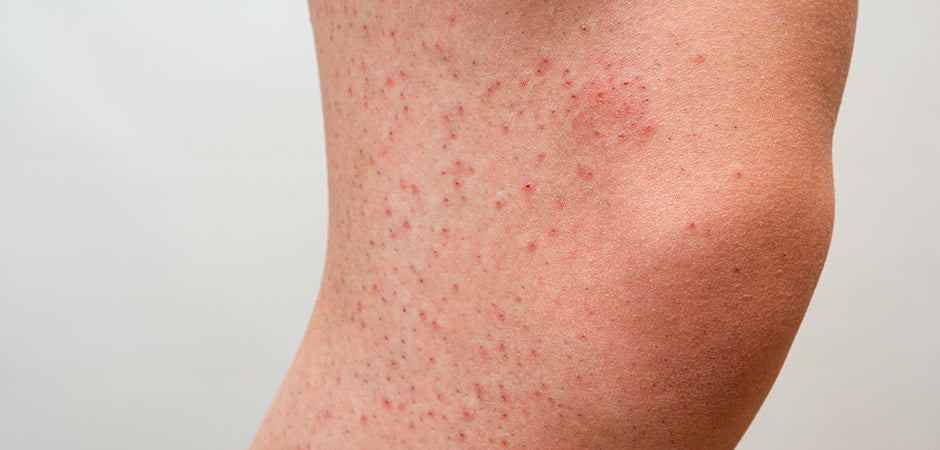You must exfoliate your skin after a bikini wax to keep it healthy. You should exfoliate once or twice a week, depending on your skin type. Keep your bikini area looking its best with regular exfoliation.
You should wait at least 2-3 days after a bikini wax before exfoliating. It allows the skin to recover and reduces the risk of irritation. Make sure the hair has grown before you exfoliate to avoid discomfort.
In this blog post, we'll dive into the benefits of exfoliation for bikini wax aftercare, explore the best time to exfoliate, and provide tips on exfoliating safely for optimal results.
When to Exfoliate After Bikini Wax: Importance

Bikini waxing is a common practice for maintaining hygiene and personal grooming. The procedure can cause redness and irritation in intimate areas due to the removal of dead skin cells along with hair. The solution to this problem lies in the importance of exfoliation in aftercare.
The Science Behind Bikini Waxing and Exfoliation
During the bikini waxing process, the hair is removed from its roots using a sticky substance, removing the dead skin cells. This leads to the exposure of new and sensitive skin.
Dead skin cells accumulate over time and cause clogged pores, leading to acne and blemishes. Hence, following a proper exfoliation routine for smooth and healthy skin is essential.

Benefits of Exfoliation
Exfoliating removes dead skin cells and has additional benefits for the skin. These benefits include clearing pores, boosting circulation, and smoothing skin texture. Let's dive into each one of these benefits in detail.
- Clearing Pores: Exfoliation helps unclog the pores and remove the debris, which can lead to blackheads and acne. This way, the pores breathe, and the skin can rejuvenate without hindrance.
- Boosting Circulation: The act of exfoliating leads to an increase in blood flow to the area. This delivers vital nutrients to the cells and promotes cell renewal, leading to healthy and glowing skin.
- Smoothing Skin Texture: A benefit that can be visually noticed is the smoothing of skin texture. After a few exfoliation sessions, coarse and flaky skin softens and becomes smooth and even. This can be a confidence booster and make one feel good about their skin.
Studies Supporting the Benefits of Exfoliation
Studies have shown that exfoliation can have positive effects on the skin. The International Journal of Cosmetic Science published a study that concluded that exfoliation improves the skin's texture, moisture, and evenness.
According to the Journal of Investigative Dermatology, regular exfoliation helps to boost collagen production.
Bikini Wax Exfoliation: Proper Techniques

Shedding off dead skin cells, exfoliation unclogs pores, prevents ingrown hair, and smoothens the skin's texture. It is equally crucial to be mindful of the products and techniques used for peeling, especially for sensitive bikini area skin. Here is the ultimate guide to exfoliating after a bikini wax.
Proper Techniques for Exfoliating
The correct technique and frequency of exfoliation are crucial to achieving the best results without harming the skin. Here are some tips to make the exfoliation process more effective and safe:
- Gently rub the exfoliating agent in a circular motion on the bikini area for at least a minute.
- Rinse off the exfoliator with lukewarm water and wipe the skin dry.
- Apply a moisturizer or oil to protect the skin and lock in the moisture after exfoliation.

Gentle Products for Sensitive Skin
Choosing the right exfoliating product is crucial to avoid any adverse reaction or irritation on the delicate skin post-waxing. Look for natural and gentle exfoliating agents that nourish and rejuvenate the skin without stripping off the moisture.
Some of the gentle exfoliating options include:
- Sugar scrubs: They are made from natural humectants that help to retain moisture in the skin while gently exfoliating.
- Lactic acid: It's a mild exfoliant that removes dead skin cells and prevents ingrown hairs without causing any irritation.
- Enzyme peels: They break down dead skin cells without harming the skin's pH level with the help of natural enzymes in fruits like papaya and pineapple.
Skin Moisturization and Protection
Moisturizing and protecting the bikini area skin after exfoliating is as crucial as exfoliating itself. It helps soothe the skin, prevent redness and inflammation, and protect it from external damage. Here are some post-exfoliation care tips for healthy and radiant skin:
- Apply a gentle, fragrance-free lotion or oil to the skin after exfoliation for better absorption.
- Avoid wearing tight clothes or underwear that rub against the waxed area and cause friction.
- Use a sunscreen lotion or wear loose clothing to protect the waxed area from direct sunlight, especially when going out in the sun.
Bikini Wax: Why Not Exfoliate Too Soon After

While it might seem tempting to jump into exfoliation right after the process to achieve baby-like smoothness, it could have severe consequences for your skin health. We'll explore why you should avoid exfoliating too soon after bikini waxing.
Risks of Exfoliating Too Soon
Exfoliating involves removing the top layer of dead skin cells, unclogging pores, and promoting circulation. However, doing so too soon after a bikini wax can irritate your skin, cause inflammation, and increase the risk of infection. Here are the risks associated with exfoliating too quickly:
- Irritation: Exfoliating before your skin has fully healed from the waxing process can lead to redness, bumps, itching, and sensitivity.
- Inflammation: Your skin experiences trauma during a bikini wax as the hair follicles are ripped from the root. Exfoliating can further aggravate the skin and increase the chances of swelling, bruising, or even bleeding.
- Infection: Exfoliating too soon after waxing exposes your skin to bacteria and germs, leading to infection and possibly painful ingrown hairs.

Redness and Swelling Should Subside
Your skin needs time to recover after a bikini wax. The degree of redness, soreness, and sensitivity you experience can depend on several factors, including your skin type, the type of wax, and the esthetician's expertise. Waiting for a few days before exfoliating can help ensure that your skin is ready for the process. Here are the reasons why you should be patient before exfoliating:
- Complete Healing: Waiting for the redness and soreness to subside promotes the complete healing of your skin. This ensures a clean and healthy canvas for your exfoliation routine.
- Avoiding Further Discomfort: Exfoliation can feel abrasive or stinging when your skin is still tender from waxing. Waiting for your skin to recover avoids any further irritation or discomfort.
- Improving Results: Exfoliating after waiting a few days will result in more effective removal of dead skin cells. You're less likely to experience any adverse reactions and more likely to achieve smoother, more radiant, and hair-free skin.
Conclusion
Exfoliation is essential to bikini wax aftercare, but timing is crucial. Waiting for your skin to heal before exfoliating is necessary to prevent further irritation.
Once ready to exfoliate, use gentle products and techniques to moisturize and protect your skin. With these tips, you'll reach healthy, smooth, and ingrown hair-free skin.



















